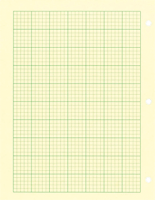Today (at the ASM GM) I went to two posters about DNA secretion by
Neisseria. I'm interested because of the associated interpretation (assumption? conclusion?) that
Neisseria have evolved the ability to secrete DNA because this promotes genetic exchange by natural transformation.
The first poster was about the genetic machinery responsible for secreting DNA, initially characterized in
N. gonorrhoeae. It's a large 'island' of genes that strongly resemble the transfer genes of conjugative plasmids (like the
E. coli F factor); they encode a type IV secretion system like that used by these plasmids to transfer a single DNA strand into a new host cell. The island appears to have been integrated into the genome by a single crossover with chromosomal DNA, likely mediated by the site-specific recombinase that normally functions to separate newly-replicated daughter DNAs when replication is finished. (This would mean that the island was originally a circular plasmid-like molecule.) Most but not all
N. gonorrhoeae strains have some version of this island. Most
N. meningitidis strains have it too, but usually with major deletions or other changes expected to make it non-functional.
So is this an adaptation to promote genetic exchange? The evidence looks good that this element does cause cells to release DNA into the medium. The student whose poster I was at said that the DNA is single-stranded and originates from a specific
oriT-like site in the element, just as we would expect for a conjugation system.
Amount of DNA released: The first paper reports that cultures after 4 hr growth contained about 150-200 ng of DNA/ml; this was almost entirely eliminated by a mutation in a component of the secretion system. A later paper quantitates the DNA produced by different strains in log phase; producers had 0.2-0.6 ng DNA per µg of cell protein.
Transforming activity of the released DNA: Transformation frequencies are high, between 10^-4 and 10^-3, consistent with the presence of high concentrations of DNA in the medium. Transformation is reduced 250-fold by addition of DNase I, confirming that this is not cryptic conjugation.
Timing of DNA release: The DNA appears in the medium in log phase, whereas cell death is expected mainly when growth slows and stops. The secretion mutant doesn't produce much DNA until the end of growth.
Mechanism of DNA release: The genetic analysis supports the hypothesis that the secretion system causes the DNA release; cells with mutations in secretion genes don't release DNA. But it doesn't distinguish between active secretion and release caused by toxic effects of the element.
Strandedness of the released DNA: This is a critical point. If all the DNA that appears in the medium in log phase is released by secretion, it should all be single-stranded. But single-stranded DNA transforms poorly - a 1981 paper by Biswas and Sparling says it's 100-fold worse than double-stranded DNA - so perhaps much of the released DNA is double-stranded. If so, it's probably not secreted DNA. If it is secreted it should also all be from the same strand of the chromosome - I don't think this has been checked.
The actual state of the released DNA is not clear. The student whose poster this was said it was all single-stranded, and that the dye used to measure it was specific for single-stranded DNA. But the papers describe use of a dye, pico green, that is advertised for measuring double-stranded DNA, and although the authors say that in their hands it also detects single-stranded DNA, they appear to have used double-stranded DNA to calibrate their assay.
I've just sent an email to the senior author on these papers, asking all these quenstions.


